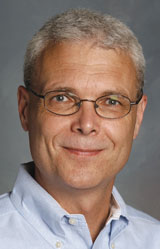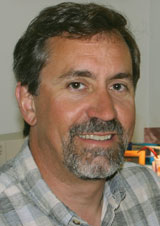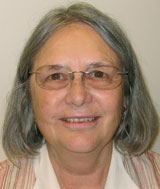Volume 28 · Number 1 · Fall 2010
Other spill experts
Financial Aid
Three other UC Davis faculty members have key roles in the scientific aspects of the Gulf of Mexico oil disaster:

Robert Poppenga
Robert Poppenga, a professor and veterinary toxicologist at the California Animal Health and Food Safety Laboratory at UC Davis, is coordinating surveillance of seafood from the area, checking for petroleum-based chemicals, including some that have the potential to cause cancer in people.
The laboratory is one of eight state and federal laboratories nationwide — and the only one in California — chosen to monitor seafood from the Gulf of Mexico for toxic substances related to the oil spill. The monitoring program is being operated and funded by the U.S. Food and Drug Administration, in collaboration with the National Oceanic and Atmospheric Administration.
“We will be looking at a variety of different seafood, including finfish, crabs, oysters and shrimp, from the impacted areas of the Gulf of Mexico,” said Poppenga.
He noted that petroleum crude oil is a complex mixture of chemicals, including some potential carcinogens. Poppenga’s team is particularly interested in a group of chemicals known as polyaromatic hydrocarbons (PAHs) such as benzene, naphthalene, fluorine, anthracene, pyrene, benzo(a)pyrene and others.
The California Animal Health and Food Safety Laboratory, operated by UC Davis’ School of Veterinary Medicine for the state of California, routinely performs diagnostic tests to identify livestock and poultry diseases. It is part of the Food Emergency Response Network, a group of local, state and federal laboratories that are equipped to test for food contamination.
Learn more from a news release and a Flash video...

Ron Tjeerdema
Ron Tjeerdema, Ph.D. ’87, director of the UC Davis Aquatic Toxicology Research Group, has advised federal agencies on the use of underwater dispersants in the Gulf of Mexico.
He was one of 50 international scientists called to Louisiana to weigh the pros of dispersants (they break up some of the oil and allow it to mix with gulf water instead of rising to the surface) against the cons (they themselves may be harmful to gulf plants and animals).
The expert panel wrote in a June 4 report, “It is the consensus of this group that up to this point, use of dispersants and the effects of dispersing oil into the water column has generally been less environmentally harmful than allowing the oil to migrate on the surface into the sensitive wetlands and near shore coastal habitats.”
For nearly 25 years, Tjeerdema has compared the effects of crude oil with the combined effects of crude oil and dispersants on marine animals such as giant kelp, shrimp, abalone, topsmelt and salmon.
Much of his research has been funded by grants from the California Department of Fish and Game Office of Spill Prevention and Response, administered by the UC Davis Oiled Wildlife Care Network. In the past five years, the network has funded $190,000 in dispersant research grants to Tjeerdema.
Tjeerdema is chair of the Department of Environmental Toxicology in the College of Agricultural and Environmental Sciences.

Susan Ustin
Susan Ustin, Ph.D. ’83, director of the Center for Spatial Technologies and Remote Sensing at UC Davis, is helping NASA create the best possible aerial images of oiled wetlands.
The images are being used to measure wetlands damage and guide wetland restoration. In particular, Ustin is helping NASA identify the most ecologically sensitive wetland and barrier island areas. These data will be used by academic scientists and researchers at state and federal agencies responsible for environmental management, such as the U.S. Geological Survey, Environmental Protection Agency and National Park Service.
The images are being taken all summer from aircraft with an instrument called the Advanced Visible-Infrared Imaging Spectrometer (AVIRIS). Every pixel contains information about the visible-light and reflected solar infrared spectrum.
Ustin’s work is funded by the NASA Jet Propulsion Laboratory and the National Science Foundation.
She previously worked on oil spills on land in California and New Mexico, and on coastal wetlands in California, Texas and Louisiana. She is a professor of resource science in the Department of Land, Air and Water Resources in the College of Agricultural and Environmental Sciences.
